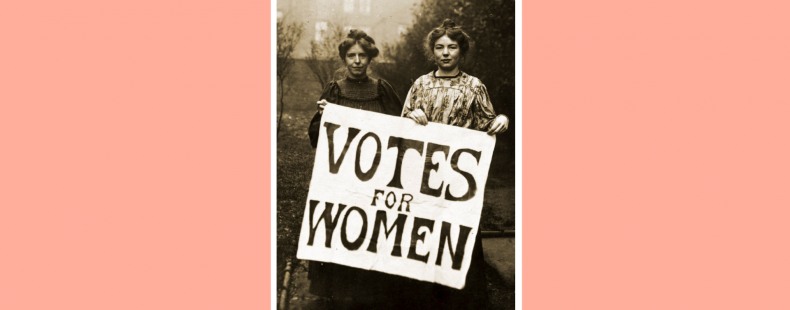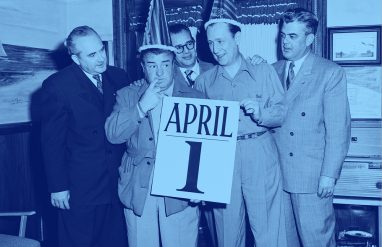Held on March 8, International Women’s Day celebrates the progress women have made over the last century, and the inspiring women who helped make that progress happen. From the suffragist movement of the 1800s to the 2017 Women’s March in Washington, women have used the power of language and oration to inspire countless people.
Early inspiration: the Enlightenment
Early feminism was heavily influenced by the Enlightenment in Europe during the late 1700s. The movement focused on reason and equality for all, and it ultimately inspired the American and French Revolutions. Think of the Declaration of Independence: “We hold these truths to be self-evident: that all men are created equal; that they are endowed by their creator with certain unalienable rights; that among these are life, liberty, and the pursuit of happiness.”
Of course, that whole all men are created equal thing didn’t apply to women or people of color at the time. That was a problem and a great source of tension for early feminism.
In the UK, Mary Wollstonecraft, an early feminist, published A Vindication of the Rights of Women in 1792, promoting the then-radical idea that women be educated on the same level as their male peers.
The word feminism itself was first coined in 1837 by French philosopher, Charles Fourier (as féminisme). It originally referred to “feminine qualities or character,” but that sense isn’t used any more. Toward the end of the century, the word came to refer to equal rights for women and became inextricably linked to the suffragist movement.
Women’s suffrage: men and women are created equal
The Seneca Falls Convention in July 1848 marked the official beginning of the American Women’s Suffrage movement, and, arguably, of American feminism in the United States. Around 300 women and men came together from across the country to discuss the status of women in the United States. Together, they wrote the Declaration of Sentiments, which opened with these words:
We hold these truths to be self-evident: that all men and women are created equal; that they are endowed by their creator with certain inalienable rights; that among these are life, liberty, and the pursuit of happiness.
Sound familiar? By purposefully mirroring the language of the Declaration of Independence, the writers compared the injustice of women’s status with the injustice faced by the American colonies in 1776. The document protested laws that denied women access to property rights, labor rights, or education, and it famously called for women to be given the right to vote (i.e., suffrage).
Many women’s suffrage leaders were also abolitionists, including Frederick Douglass and Sojourner Truth. In 1851, Truth gave an impassioned speech at the Women’s Convention in Ohio arguing against the then-popular argument that women’s suffrage would de-feminize women, explaining that slavery exposed her to the same backbreaking labor and mistreatment as any of the male slaves.
The Nineteenth Amendment: the spirit of protest
The Woman Suffrage Parade of 1913 was the first and most significant march for the cause. Occurring the day before President Woodrow Wilson’s inauguration, which women were barred from attending, the parade saw thousands of suffragettes marching down Pennsylvania Avenue in Washington, DC.
This early spirit of protest continued in the form of the Silent Sentinels, who picketed silently in front of the White House six days a week between 1917–1919. The constant presence of these women was a daily reminder to President Wilson that America’s women had their eye on him. The protesters even used Wilson’s own quotes against him: “We shall fight for the things which we have always carried nearest our hearts—for democracy, for the right of those who submit to authority to have a voice in their own governments.”
In 1872, Susan B. Anthony was arrested for trying to vote. During her trial, she argued that as a citizen of the United States, she had a constitutionally protected right to vote. The court ruled that citizenship didn’t equal voting rights. Almost 50 years later, in 1920, the Nineteenth Amendment was passed, proclaiming, “The right of citizens of the United States to vote shall not be denied or abridged by the United States or by any State on account of sex.” Notably, 2020 marked the 100th anniversary of the Nineteenth Amendment.
Women’s liberation movement: the second wave of feminism
Tracing a history of feminism leads us to what is known as the second wave of feminism—or the Women’s Movement or Women’s Liberation—that stretched from the early 1960s–1980s. (In this sense, liberation is “the act or fact of gaining equal rights or full social or economic opportunities for a particular group.”) When the Kinsey Reports, the first academic studies of human sexuality, were published in 1948 and 1953, the taboos surrounding sex and sexuality–taboos felt largely by women–began to fade. And then, in 1963, Betty Friedan published her national bestseller, The Feminine Mystique.
In 1961, President Kennedy’s Presidential Commission on the Status of Women found that American women had far fewer rights or economic opportunities than men. They were paid less for the same jobs, experienced more (unpunished) harassment, and they could be fired or denied a job for becoming pregnant. Domestic violence was an unaddressed issue at home, and it was very hard to divorce, especially if there were children in the picture. All of that is just scratching the surface.
Around this time, Women’s Liberation activists used language to further their social goals. They began using the ambiguous Ms., rather than Miss or Mrs., to hide their marital status (the way Mr. already did for men). This was also the time when the terms sexism and sexual harassment were coined, highlighting the similarities between discrimination against women and racism.
A lot of the legislation of these decades focused on the aspect of equality the Equal Pay Act, the Equal Employment Opportunity Commission, the Equal Credit opportunity, etc. These all helped to promote the joint interests of women and people of color in the struggle for equal rights. (The Women’s Strike for Equality in 1970 was another reflection of this struggle.)
Third-wave feminism and intersectionality
Today, we live in the era of third-wave feminism. This generation is much more focused on the intersections of gender, race, sexuality, and income inequality. Rising in the 1990s with the Riot Grrrl movement and Anita Hill’s very public sexual harassment case against incoming Supreme Court Justice Clarence Thomas, this era continues the work of Women’s Liberation while also breaking new ground for future generations.
No movement is without its internal struggles, however. The Women’s Liberation movement represented numerous different groups with different priorities; as a result, third-wave feminism has sectioned off somewhat to reflect these differing priorities and politics. Although those lines can blur, this intersectionality (“the theory that the overlap of various social identities, as race, gender, sexuality, and class, contributes to the specific type of systemic oppression and discrimination experienced by an individual”) is becoming a prominent feature of today’s feminism.
WATCH: Do You Know If Intersectionality Affects You?
As issues of gender, sexual, and racial identity continue to overlap, so, too, will the language of feminism need to keep up. But if the women’s movements of the past have taught us anything, it’s that political change tends to follow social change, and language can be a major force in driving that change.














